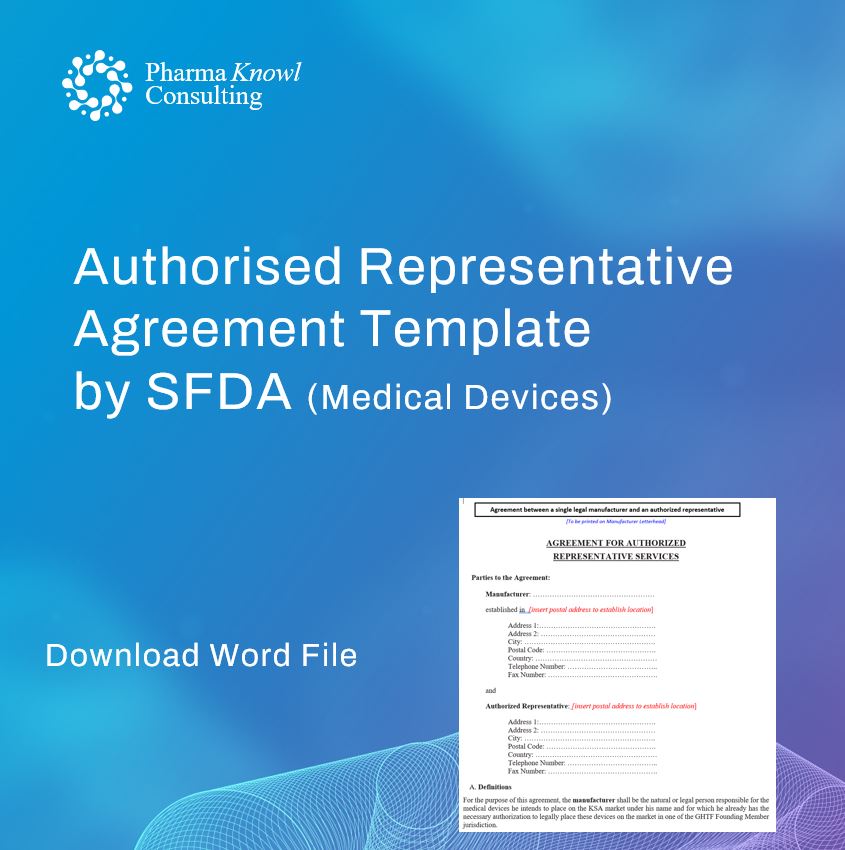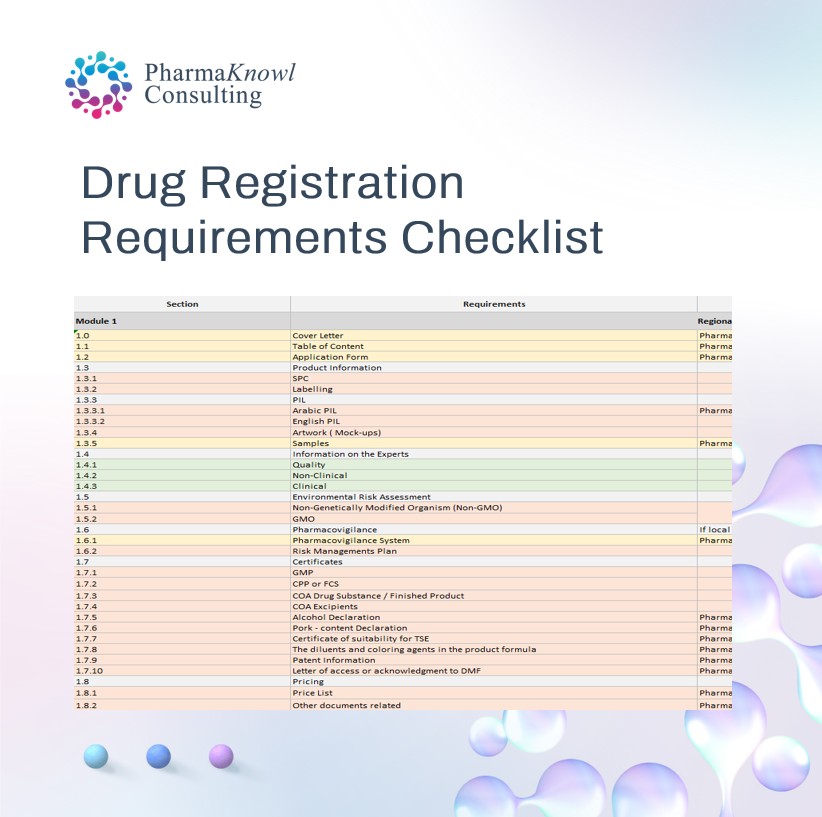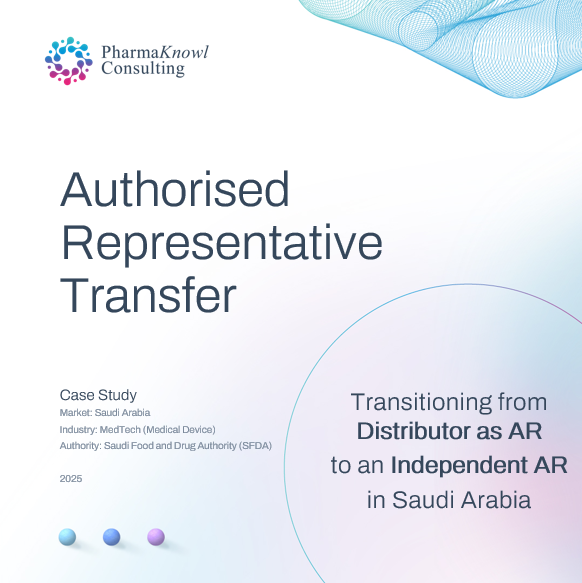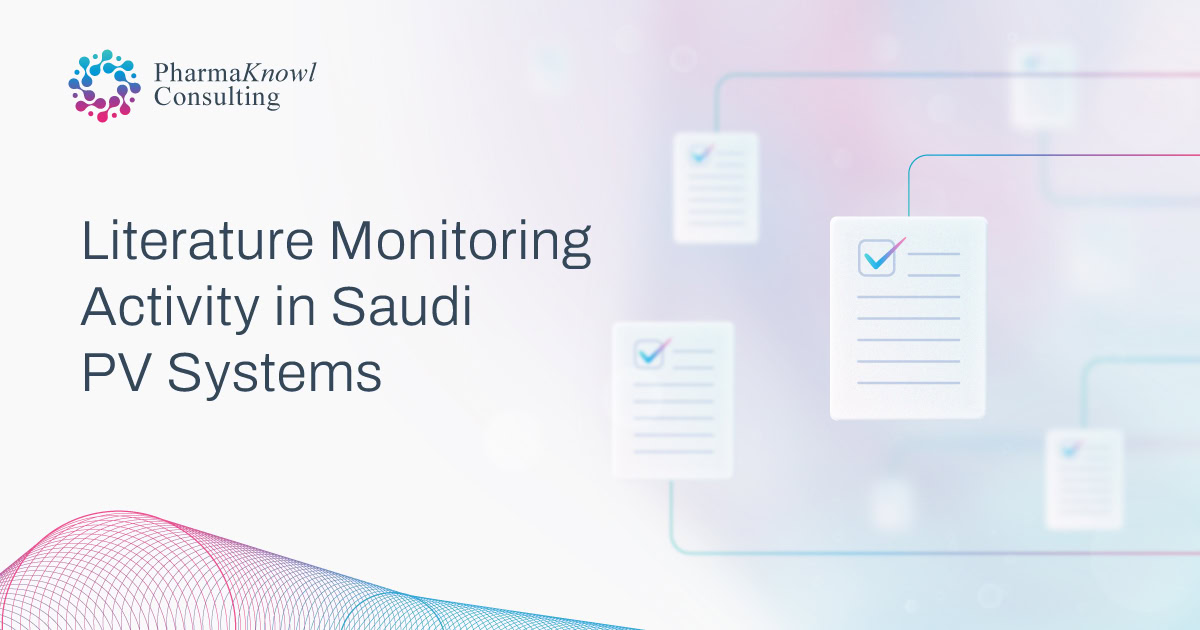
About the Author
Regulatory Editor
Published by regulatory affairs team in PharmaKnowl, Riyadh office.
The Saudi Food and Drug Authority (SFDA) requires international marketing authorisation holders (MAHs) to develop and maintain a pharmacovigilance subsystem file (PSSF) for the Saudi market. This file is similar to the PSMF—they even call it the local PSMF—but its content must reflect the local system within which the QPPV works. In this post, we outline the requirements for this file.
Table of contents
Introduction
According to the Saudi Good Pharmacovigilance Practices (GVP) Guideline, marketing authorisation holders (MAHs) are required to establish a local pharmacovigilance (PV) subsystem in the Saudi market. This subsystem must be documented in a file known as the Pharmacovigilance Sub-System File (PSSF), which describes the essential requirements of pharmacovigilance activities in the KSA. This would work as a branch of their central PV system in the country of origin (PSMF).
What is PSSF?
The PSSF is a file that includes the necessary information and documentation related to performing Pharmacovigilance activities nationally in the Saudi Arabian market. The SFDA requires the Saudi QPPV to be fully responsible for the PSSF generation and maintenance. Regarding the location, the PSSF shall remain within Saudi Arabia, where the local QPPV operates. The PSSF may be supplied electronically, provided that SFDA can access a well-organised hard copy upon request.
PSSF sections
The PSSF should include the following sections:
QPPV Section
This section includes essential information about the QPPV’s role and responsibilities. It should cover job description, qualifications, experiences, and contact details. It should also address backup arrangements if the QPPV is unavailable for pharmacovigilance duties. Any additional information shall be included in Annexe A.
Organizational Structure
The structure of the MAH’s local office for pharmacovigilance should be described. It should include details about the company, the central PV department, and the relationships between organisations and units involved in pharmacovigilance. It’s also important to mention any third parties involved. Additional information shall be included in Annexe B.
Sources of safety data
This section should describe the steps of collecting safety data for authorised products in the SFDA. This should include timeframes, parties involved, and flow diagrams. It should also mention the departments or third parties responsible for collecting and reporting ICSRs. Additional information shall be included in Annexe C.
Computerised systems and databases
The KSA PSSF should describe the computerised systems and databases used at the national level, including location, functionality, operational responsibility, and a suitability assessment. Multinational MAHs can own a database outside KSA, but the QPPV must have access to local safety cases and pharmacovigilance data online. Alternatively, a local database should be maintained in the Saudi Arabia office. Additional information shall be included in Annexe D.
Pharmacovigilance processes
The PSSF should describe the procedural documentation available at the national level, the type of data held, and an indication of how records are archived. Any relevant information shall be added to Annexe E.
Pharmacovigilance sub-system performance
Evidence of the continuous performance monitoring of the PSSF, including compliance with the primary pharmacovigilance outputs, should be included in the PSSF. More details shall be included in Annexe F.
Quality system
This section should include the audit schedules and a list of completed and carried out audits. Additional information shall be added in Annexe G.
Product
Annexe H lists the product details covered by the local pharmacovigilance system. Annexe I includes any changes or updates to the PSSF/annexes.
PSSF Submission to SFDA
The PSSF is not routinely submitted to the SFDA. Instead, the summary of KSA PSSF shall be presented within the application for new drug registration. However, there are exceptions in which full KSA PSSF and its summary are requested for submission, including but not limited to:
- The MAH doesn’t have prior marketing authorisation in the KSA.
- The MAH has not previously provided the PSSF to SFDA.
- The MAH underwent significant organisational changes and updates to its pharmacovigilance system.
Summary of PSSF
As mentioned, the entire PSSF file and its summary are requested in certain circumstances. However, for the marketing authorisation application, only a summary of the MAH KSA PSSF is required, and it should include the following:
- Proof of the QPPV that is located in KSA.
- Contact details of the QPPV and deputy.
- A signed statement confirming the MAH’s capacity to fulfil the pharmacovigilance responsibilities.
- Location reference for the KSA PSSF.
Conclusion
This article emphasises the importance of meeting PV requirements, as outlined in the SFDA GVP guideline. By implementing a comprehensive pharmacovigilance system, including the PSSF, multinational MAHs can effectively monitor and supervise medication safety within the country, ensuring compliance with local laws and regulations in Saudi Arabia.
Read More







